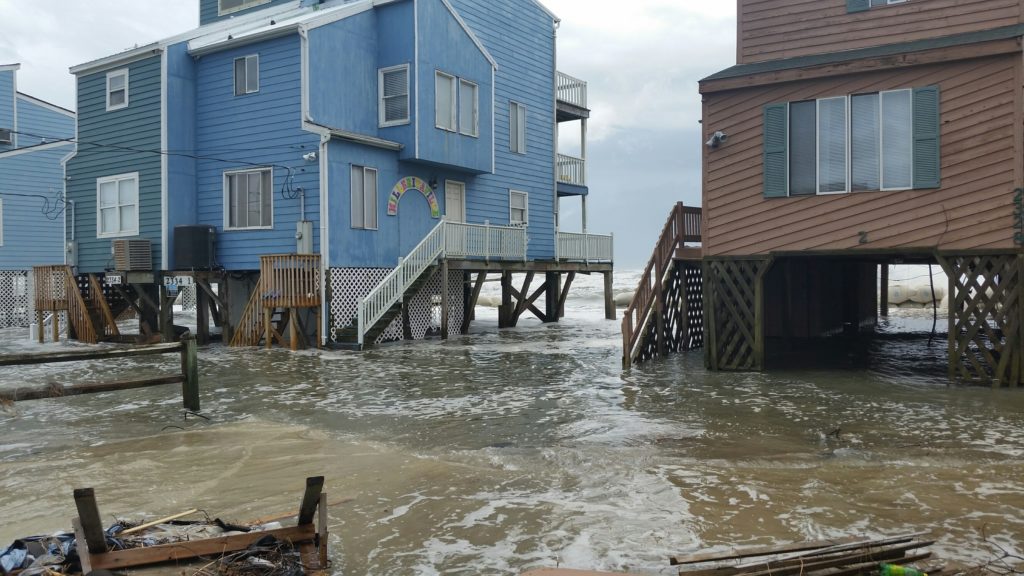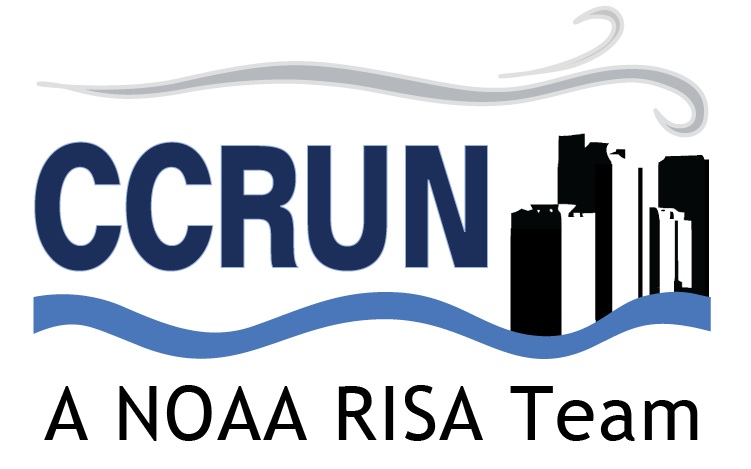CCRUN RESEARCH SECTORS
Coasts
In the Northeast region, adapting to the impacts of sea level rise, coastal flooding, and extreme events is critical for building coastal resilience. The sector takes a broad approach to coastal adaptation, moving beyond hard infrastructure solutions to incorporate ecological, social, and policy dimensions that build layered resilience. The coasts team is able to provide flood modeling and evaluate what coastal adaptations would stop flood scenarios with sea level rise. Current sector priorities include producing climate information that results in informed and improved decision-making on coastal urban resilience.

Current Research: Compound Flood Risk and Adaptation in Philadelphia
Compound flooding is the combination of rainfall-induced flooding with storm surge induced flooding, and is currently inadequately considered nationwide in both flood risk assessment and forecasts.In many U.S. cities, coastal and fluvial floods merge in estuaries, causing a compounded problem, and the coincident occurrence of extreme rain and surge is growing at many locations. However, little research has been performed to improve our understanding of compound flooding.
An ideal location to investigate this problem, Eastwick is a low-lying neighborhood in South Philadelphia situated near the Delaware River at the confluence of Darby and Cobb’s Creeks. The proposed research will inform climate risk management and adaptation decision-making regarding flooding in Eastwick). The project will include four core areas of science, as well as a community engagement process, strong coordination with decision makers and a specific focus on two ongoing city planning initiatives. The advancement of scientific understanding, prediction and communication of compound flooding will help enable effective decisions, and our development and dissemination of modeling, statistical hazard analysis and benefit-cost analysis tools will have a nationwide impact on resilience.
Other Projects:
- Coastal Flood Modeling and Mapping
- Sea Level Rise Scenarios
- Jamaica Bay Community Flood Watch Project
- Stevens Flood Advisory System
Recent publications:
Orton, P., Lin, N., Gornitz, V., Colle, B., Booth, J., Feng, K., … Patrick, L. (2019). New York City Panel on Climate Change 2019 Report Chapter 4: Coastal Flooding. Annals of the New York Academy of Sciences, 1439(1), 95–114. https://doi.org/10.1111/nyas.14011
Gurumurthy, P., Orton, P. M., Talke, S. A., Georgas, N., & Booth, J. F. (2019). Mechanics and Historical Evolution of Sea Level Blowouts in New York Harbor. Journal of Marine Science and Engineering, 7(5), 160. https://doi.org/10.3390/jmse7050160
Patrick, L., Solecki, W., Gornitz, V., Orton, P., & Blumberg, A. (2019). New York City Panel on Climate Change 2019 Report Chapter 5: Mapping Climate Risk. Annals of the New York Academy of Sciences, 1439(1), 115–125. https://doi.org/10.1111/nyas.14015
Key Stakeholders:
New York City Mayor’s Office of Resiliency
US Army Corps of Engineers
The Nature Conservancy
New York - New Jersey Harbor Estuary Program
Contact:
Dr. Philip Orton
